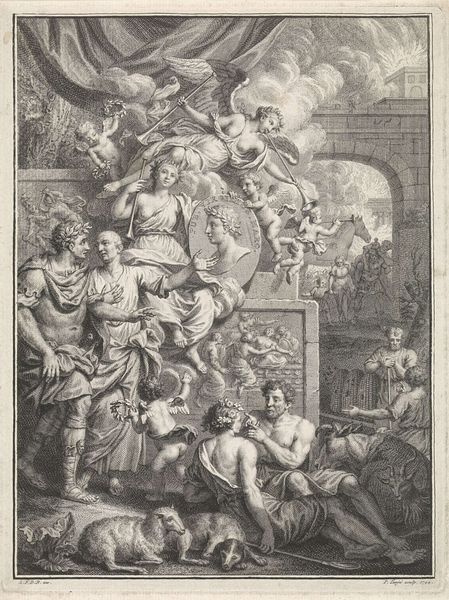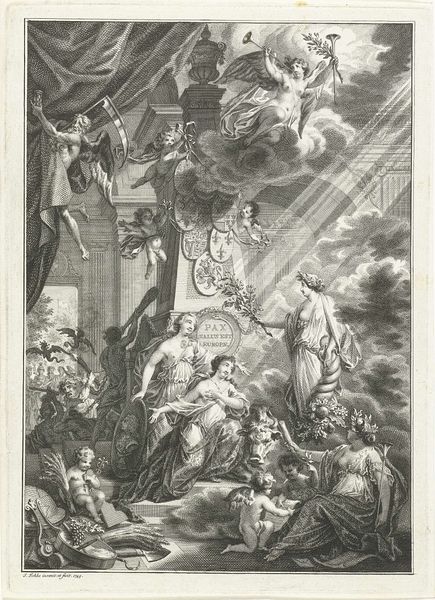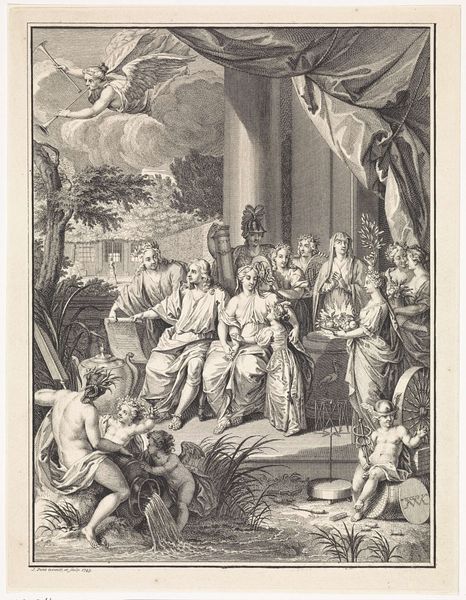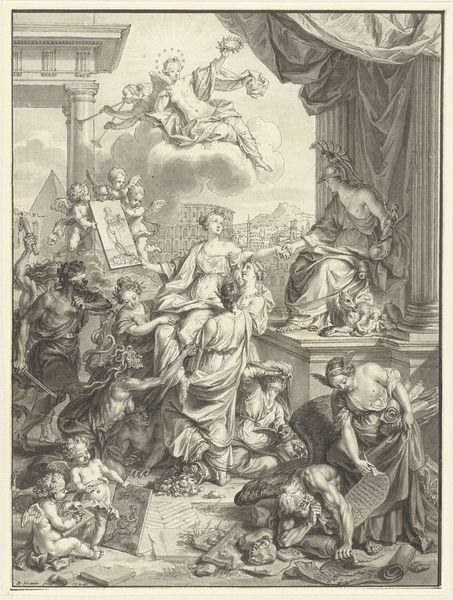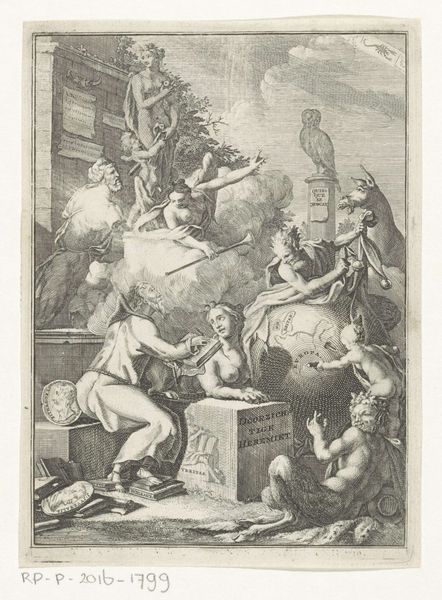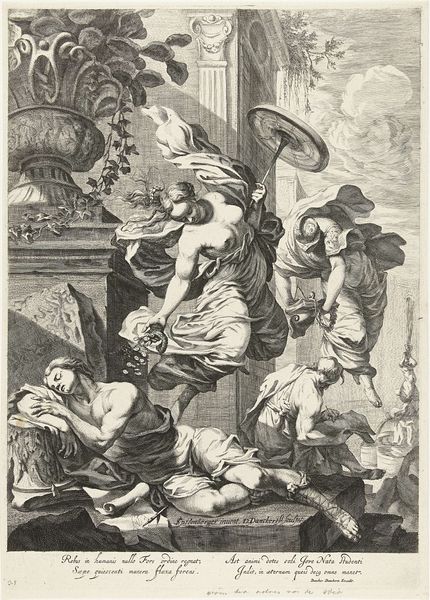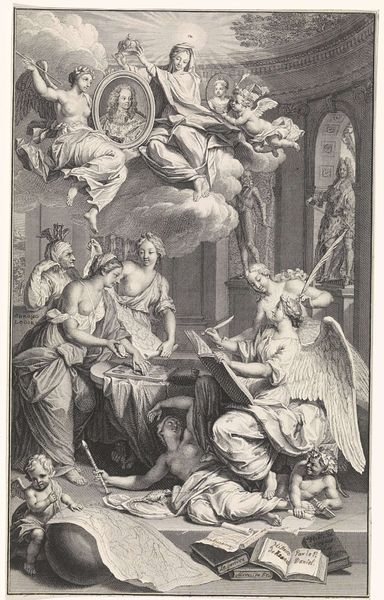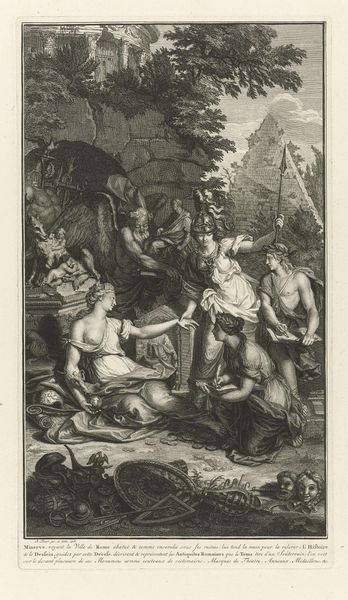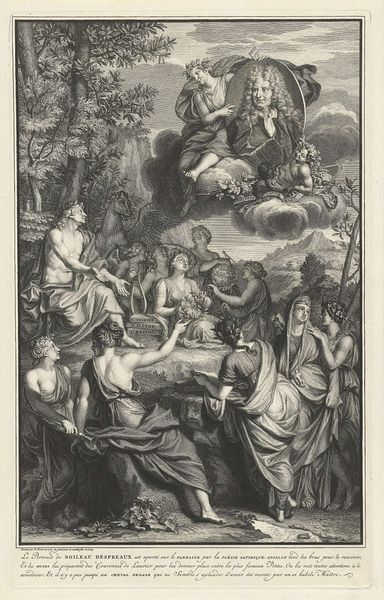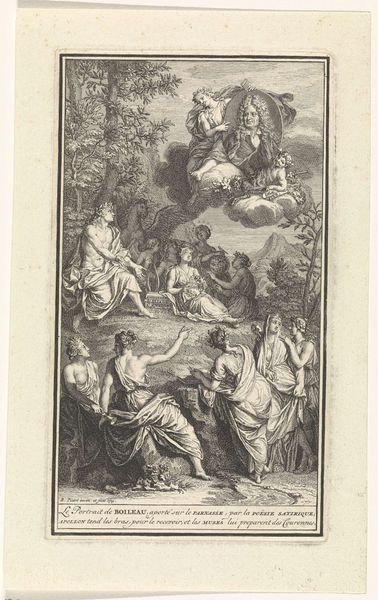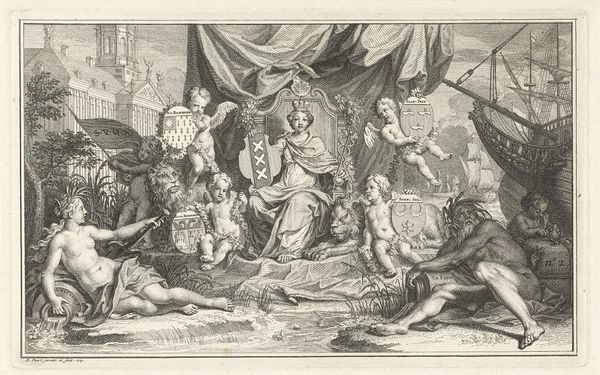
print, engraving
#
allegory
#
baroque
#
symbol
# print
#
old engraving style
#
traditional media
#
figuration
#
classicism
#
line
#
history-painting
#
engraving
Dimensions: height 260 mm, width 174 mm
Copyright: Rijks Museum: Open Domain
Editor: This engraving, "The Triumph of Painting" by Bernard Picart, dates back to 1725. I am struck by the allegorical figures and the almost chaotic composition. The architecture in the background adds to the sense of grandeur. How would you interpret this work, especially considering its historical context? Curator: The engraving reflects the early Enlightenment’s self-conscious turn toward art, history, and the "progress" of human events. It champions painting, which is literally crowned with immortality as war and ignorance are trampled underfoot. Notice how classical forms are being revived – referencing antiquity to bolster painting’s elevated status. How do you see the socio-political forces at play here? Editor: It seems to position painting as a civilizing force, rising above ignorance and violence, and aligning with ideals of peace and prosperity. The very act of creating and appreciating art is being portrayed as a virtuous activity with wider societal impact. Is it naive to present art with so much symbolic agency? Curator: Not necessarily naive, but certainly a pointed political argument about the role of art and the artist in society. Pictart’s Triumph implies that art, particularly history painting, has a moral and educational duty to guide humanity toward progress. Consider where it’s displayed and consumed—what does its availability or accessibility say about this intent? Editor: So it's not just a celebration of painting but also a deliberate attempt to shape its reception and influence within society. Thinking about the institutions that supported this art, the museums and galleries, it speaks volumes about who it was intended for. It highlights the power dynamics in place back then. Thanks, I now see the picture. Curator: Exactly! It prompts us to reflect on the evolving social functions and expectations we project onto art across history, and our current moment too.
Comments
No comments
Be the first to comment and join the conversation on the ultimate creative platform.
